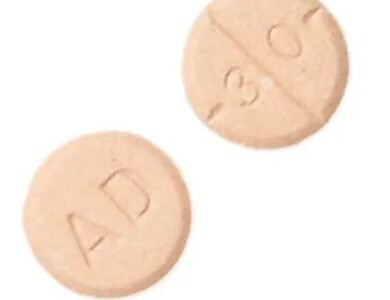Future of Wearable Electronics with Molybdenum Disulfide Nanoparticles
Wearable electronics have become an integral part of modern life, with devices ranging from fitness trackers and smartwatches to smart clothing and healthcare monitoring systems. As the demand for these devices continues to grow, so does the need for materials that can enhance their performance, durability, and flexibility. One such promising material is molybdenum disulfide nanoparticles. Known for their exceptional electrical, mechanical, and optical properties, MoS2 nanoparticles are poised to revolutionize the future of wearable electronics. This article explores the role of MoS2 nanoparticles in wearable technology, their benefits, and the advancements that could shape the future of this rapidly evolving field.
The Rise of Wearable Electronics
Wearable electronics have experienced a meteoric rise over the past decade. Devices like smartwatches, fitness trackers, and health monitors have become ubiquitous, providing users with real-time data on their health and activities. The success of these devices depends on several factors: flexibility, energy efficiency, lightweight design, and durability. As consumers demand increasingly sophisticated features, researchers are seeking new materials to meet these challenges. Molybdenum disulfide nanoparticles are emerging as a key player in addressing these needs, offering unparalleled advantages over conventional materials.
Understanding Molybdenum Disulfide Nanoparticles
Molybdenum disulfide is a two-dimensional material similar to graphene but with distinct properties that make it particularly suitable for electronic applications. MoS2 consists of a single layer of molybdenum atoms sandwiched between two layers of sulfur atoms, creating a structure that exhibits excellent electronic properties. MoS2 nanoparticles possess a unique combination of characteristics, such as:
- High Electron Mobility: MoS2 allows for fast electron transport, making it an ideal candidate for high-performance electronic devices.
- Semiconducting Properties: Unlike graphene, which is a conductor, MoS2 is a semiconductor with a direct bandgap. This property makes it more suitable for creating transistors, sensors, and optoelectronic devices.
- Flexibility and Strength: MoS2 nanoparticles exhibit remarkable mechanical strength while remaining flexible, essential for wearable electronics that require durability without sacrificing comfort.
- Chemical Stability: MoS2 is chemically stable, which ensures the longevity and reliability of devices made with this material.
Applications of MoS2 Nanoparticles in Wearable Electronics
The unique properties of molybdenum disulfide nanoparticles open up a wide range of applications in wearable electronics. Below are some of the most promising areas where MoS2 can make a significant impact.
Flexible and Stretchable Electronics
Wearable devices must often conform to the human body, requiring materials that are flexible and stretchable. MoS2 nanoparticles can be incorporated into thin films, allowing electronic components to bend and stretch without breaking. This flexibility is crucial for applications like smart clothing, where electronic components are embedded into fabrics. These devices must withstand repeated bending and stretching, and MoS2’s mechanical properties make it ideal for such applications.
Energy-Efficient Wearables
One of the primary challenges in wearable technology is energy consumption. Devices need to be energy-efficient to prolong battery life and minimize the need for recharging. MoS2 nanoparticles, due to their high electron mobility, can improve the efficiency of transistors and sensors used in wearable electronics. This leads to lower energy consumption and longer battery life, a crucial advantage for devices that need to function continuously, such as health monitors and fitness trackers.
Wearable Sensors
Sensors play a vital role in wearable electronics, enabling devices to monitor various physiological parameters such as heart rate, temperature, and movement. MoS2 nanoparticles can be used to create highly sensitive and accurate sensors for wearable applications. Their semiconducting properties allow for precise detection of electrical signals, making them ideal for biosensors used in health monitoring devices. Additionally, MoS2-based sensors can be integrated into transparent and flexible materials, further enhancing the versatility of wearable devices.
Optoelectronics and Display Technologies
Optoelectronic devices, such as displays and touchscreens, are essential components of many wearable devices. MoS2 nanoparticles, with their exceptional optical properties, can be used to create high-performance optoelectronic components. MoS2’s ability to absorb and emit light makes it a strong candidate for next-generation flexible displays that can be curved or bent. This opens up possibilities for wearable devices with foldable or rollable screens, making them more portable and convenient for users.
Wearable Energy Harvesting Devices
Energy harvesting is an exciting area of research in wearable electronics, allowing devices to generate their own power from the environment. MoS2 nanoparticles can play a crucial role in this field due to their piezoelectric properties, which enable them to generate electrical energy from mechanical stress. This could lead to the development of wearable devices that can harvest energy from body movements or environmental vibrations, reducing the need for external power sources.
Challenges and Future Directions
While the potential of molybdenum disulfide nanoparticles in wearable electronics is vast, several challenges must be addressed before widespread adoption can occur.
Scalability and Production Costs
One of the main challenges is the large-scale production of high-quality MoS2 nanoparticles. Currently, methods for producing MoS2 are still in the research phase, and scaling these methods to industrial levels without compromising quality is a significant hurdle. Additionally, the cost of production must be reduced to make MoS2-based wearable electronics commercially viable.
Integration with Existing Technologies
Integrating MoS2 nanoparticles into existing manufacturing processes for wearable electronics may require new techniques and infrastructure. Researchers are working on developing methods to incorporate MoS2 into flexible substrates and electronic components, but further advancements are needed to seamlessly integrate these materials into mass production.
Durability and Long-Term Performance
While MoS2 is chemically stable, its long-term performance in wearable electronics must be thoroughly tested, especially under real-world conditions. Wearable devices are exposed to various environmental factors, such as moisture, temperature fluctuations, and mechanical stress. Ensuring that MoS2-based components can withstand these conditions over extended periods is essential for their commercial success.
Conclusion
The future of wearable electronics looks bright with the introduction of molybdenum disulfide nanoparticles. Their unique properties, including high electron mobility, flexibility, semiconducting capabilities, and chemical stability, make them an ideal material for next-generation wearable devices. As research and development continue, MoS2 nanoparticles are expected to play a crucial role in advancing flexible electronics, energy-efficient wearables, sensors, and optoelectronic devices. While challenges remain, the potential for MoS2 to revolutionize the wearable technology landscape is undeniable. With continued innovation and investment, the future of wearable electronics powered by molybdenum disulfide nanoparticles is closer than ever.



